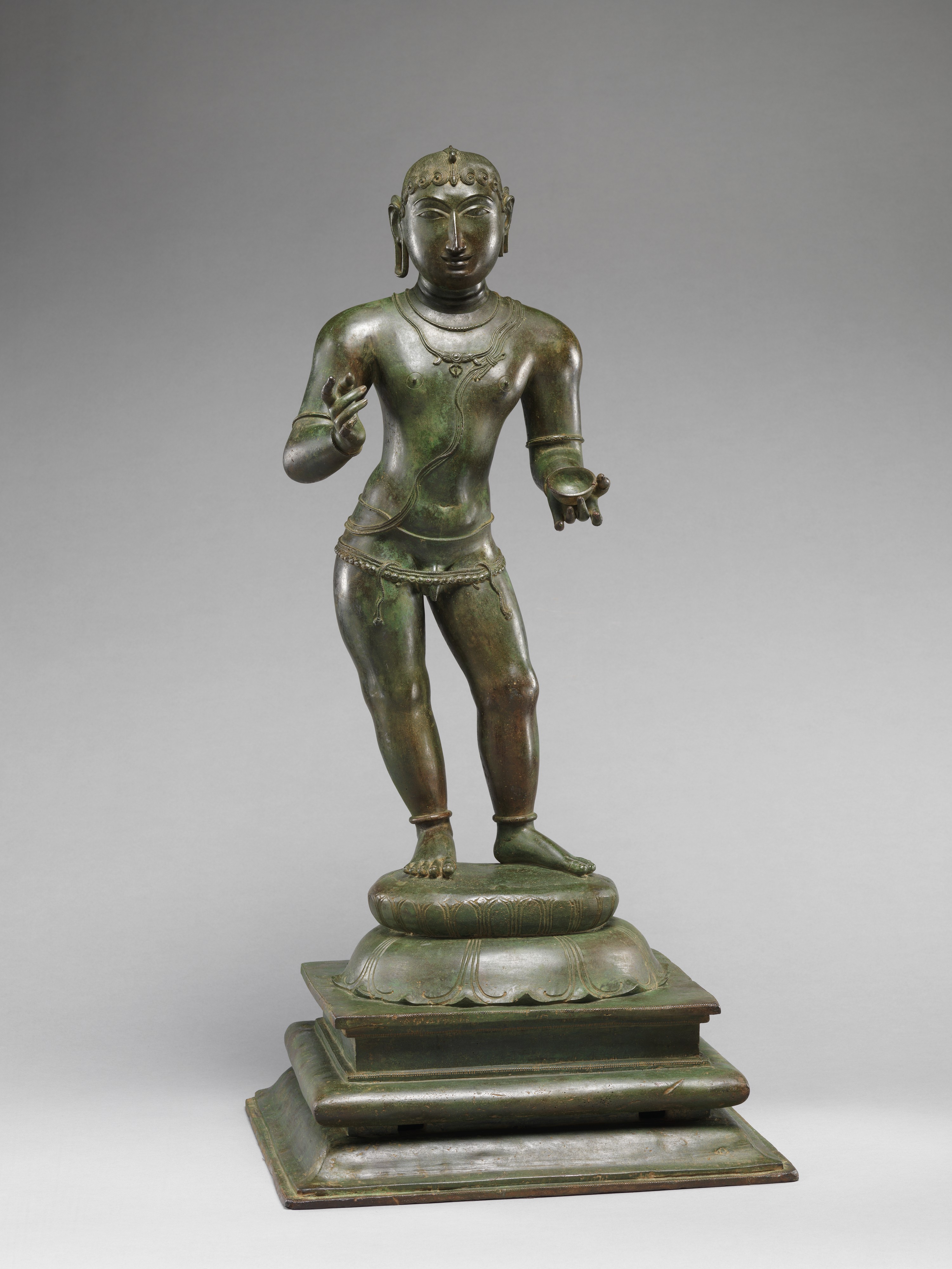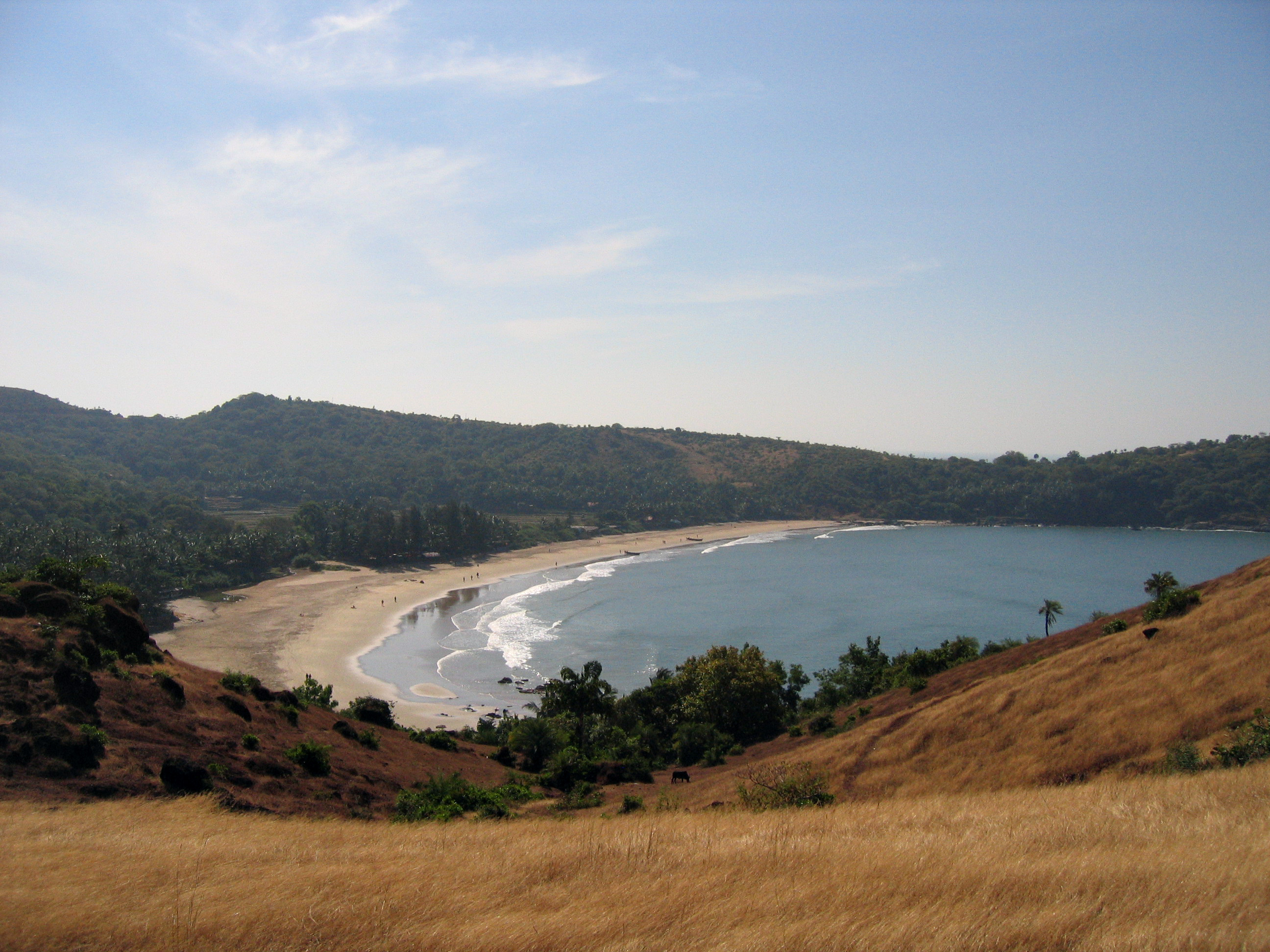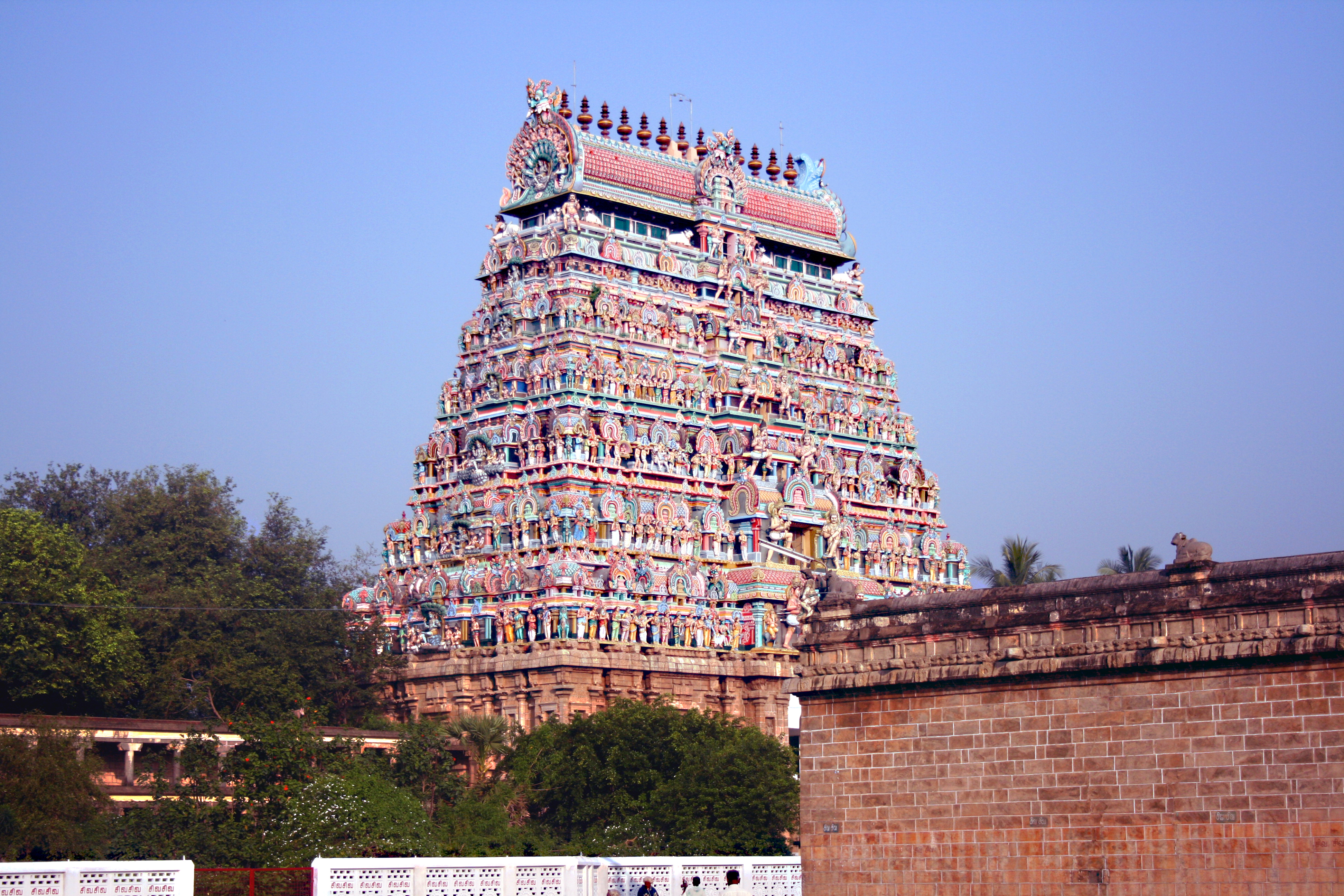|
Tirunavukkarasar
Appar, also referred to as ( ta, திருநாவுக்கரசர்) or Navukkarasar, was a seventh-century Tamil Śaiva poet-saint. Born in a peasant Śaiva family, raised as an orphan by his sister, he lived about 80 years and is generally placed sometime between 570 and 650 CE.Zvelebil 1974, p. 95 Appar composed 4,900 devotional hymns to the god Shiva, out of which 313 have survived and are now canonized as the 4th to 6th volumes of ''Tirumurai''. One of the most prominent of the sixty-three revered Nayanars, he was an older contemporary of Thirugnana Sambandar. His images are found and revered in Tamil Shiva temples. His characteristic iconography in temples show him carrying a farmer's small hoe – a gardening tool and weed puller. Names Appar is also known as Tirunāvukkarasar (''lit.'' "King of the Tongue, Lord of Language"). His birth-name was Marulneekkiyar, and was renamed to Tharumasenar while he studied and later served as the head of a Jain monastery. ... [...More Info...] [...Related Items...] OR: [Wikipedia] [Google] [Baidu] |
Thiruvarur
Thiruvarur () also spelt as Tiruvarur is a town and municipality in the Indian state of Tamil Nadu. It is the administrative headquarters of Thiruvarur district and Thiruvarur taluk. The temple chariot of the Thyagaraja temple, weighing and measuring tall is the largest temple chariot in India. Thiruvarur is the birthplace of Tyagaraja, Muthuswami Dikshitar and Syama Sastri, popularly known as the Trinity of Carnatic music of the 18th century CE. Thiruvarur Thiyagarajaa Swaamy temple is older than Tanjore big temple. Thiruvarur was a part of Thanjavur district until 1991. The Odambokki river passes through the centre of the town. Thiruvarur covers an area of and had a population of 58,301 as of 2011. Out of total population of Tiruvarur, 1,403,348 in the district, 257,795 are in urban area and 1,006,482 are in rural area. 65,220 households are in urban, 261,999 are in rural area. It is administered by a first grade municipality. The town is a part of the Cauvery delta region ... [...More Info...] [...Related Items...] OR: [Wikipedia] [Google] [Baidu] |
Nayanars
The Nayanars (or Nayanmars; ta, நாயன்மார், translit=Nāyaṉmār, translit-std=ISO, lit=hounds of Siva, and later 'teachers of Shiva ) were a group of 63 Tamil Hindu saints living during the 6th to 8th centuries CE who were devoted to the Hindu god Shiva. Along with the Alvars, their contemporaries who were devoted to Vishnu, they influenced the Bhakti movement in early medieval South India. The names of the Nayanars were first compiled by Sundarar. The list was expanded by Nambiyandar Nambi during his compilation of material by the poets for the ''Tirumurai'' collection, and would include Sundarar himself and Sundarar's parents. The Nalvar () are the four foremost Nayanars Appar, Sundarar, Sambandar and Manikkavaasagar. History The list of the Nayanars was initially compiled by Sundarar (Sundararmurthi). In his poem ''Tiruthonda Thogai'' he sings, in eleven verses, the names of the Nayanar saints up to Karaikkal Ammaiyar, and refers to himself as "the serv ... [...More Info...] [...Related Items...] OR: [Wikipedia] [Google] [Baidu] |
Tevaram
The ''Thevaram'' ( ta, தேவாரம், ), also spelled ''Tevaram'', denotes the first seven volumes of the twelve-volume collection ''Tirumurai'', a Śaiva narrative of epic and puranic heroes, as well as a hagiographic account of early Saiva saints set in devotional poetry. The ''Thevaram'' volumes contain the works of the three most prominent Saiva Tamil poets of the 7th and 8th centuries: Sambandar, Appar, and Sundarar. The three poets were not only involved in portraying their personal devotion to Shiva, but also engaged a community of believers through their songs. Their work is an important source for understanding the Śaiva Bhakti movement in the early medieval South India. In the 10th century, during the reign of Rajaraja I of the Chola dynasty, these poets' hymns were collected and arranged by Nambiyandar Nambi. Starting with the ''Thevaram'' along with the rest of ''Tirumurai'' and ending with the ''Periya Puranam'', Tamil Saivism acquired a canonical set of ... [...More Info...] [...Related Items...] OR: [Wikipedia] [Google] [Baidu] |
Tirumurai
''Thirumurai'' (Tamil: திருமுறை, meaning holy division) is a twelve-volume compendium of songs or hymns in praise of Shiva in the Tamil language from the 6th to the 11th century CE by various poets in Tamil Nadu. Nambiyandar Nambi compiled the first seven volumes by Appar, Sampandhar and Sundarar as ''Tevaram'' during the 12th century. During the course of time, a strong necessity was felt by scholars to compile Saiva literature to accommodate other works. ''Tiruvasakam'' and ''Tirukovayar'' by Manickavasagar are included as the eighth, nine parts are compiled as the ninth ''Tirumurai'' out of which most are unknown, and the tenth as ''Tirumandiram'' by Tirumular, the famous ''Siddhar''. The eleventh is compiled by Karaikal Ammaiyar, Cheraman Perumal and others. The contemporary Chola king was impressed by the work of Nambi and included Nambi's work in the eleventh ''Tirumurai''. Sekkizhar's ''Periya Puranam'', composed a century later, contains the life ... [...More Info...] [...Related Items...] OR: [Wikipedia] [Google] [Baidu] |
Shiva
Shiva (; sa, शिव, lit=The Auspicious One, Śiva ), also known as Mahadeva (; ɐɦaːd̪eːʋɐ, or Hara, is one of the principal deities of Hinduism. He is the Supreme Being in Shaivism, one of the major traditions within Hinduism. Shiva is known as "The Destroyer" within the Trimurti, the Hindu trinity which also includes Brahma and Vishnu. In the Shaivite tradition, Shiva is the Supreme Lord who creates, protects and transforms the universe. In the goddess-oriented Shakta tradition, the Supreme Goddess ( Devi) is regarded as the energy and creative power (Shakti) and the equal complementary partner of Shiva. Shiva is one of the five equivalent deities in Panchayatana puja of the Smarta tradition of Hinduism. Shiva has many aspects, benevolent as well as fearsome. In benevolent aspects, he is depicted as an omniscient Yogi who lives an ascetic life on Mount Kailash as well as a householder with his wife Parvati and his three children, Ganesha, Kartikeya and A ... [...More Info...] [...Related Items...] OR: [Wikipedia] [Google] [Baidu] |
Gokarna, India
Gokarna is a small temple town located in Uttara Kannada district of Karnataka state in India, It has a population of around 20,000. The main temple and deity is Shiva, who is also known as Mahabaleshwara. This temple houses what is believed to be original image of Shiva's ''linga'' (Atmalinga). Gokarna is known as one of the seven important Hindu pilgrimage centers. It is on what was once an unspoiled beach near the estuary of the river Aghanashini. Recently, due to the influx of tourists, the character of the town has changed; it is no longer just a centre of pilgrimage, though large numbers of devotees visit to offer prayers and worship to Shiva. Due to its laid-back, unspoiled and rustic nature many younger western tourists started visiting Gokarna about three decades ago. Enterprising locals started stores and restaurants. Later the onset of millennial youth increased the tourism. Now the resorts also cater to wealthier tourists. Etymology Gokarna means ''cow's ear'' ... [...More Info...] [...Related Items...] OR: [Wikipedia] [Google] [Baidu] |
Sangam Literature
The Sangam literature (Tamil: சங்க இலக்கியம், ''caṅka ilakkiyam'';) historically known as 'the poetry of the noble ones' (Tamil: சான்றோர் செய்யுள், ''Cāṉṟōr ceyyuḷ'') connotes the ancient Tamil literature and is the earliest known literature of South India. The Tamil tradition and legends link it to three literary gatherings around Madurai and Kapāṭapuram ( Pandyan capitals): the first over 4,440 years, the second over 3,700 years, and the third over 1,850 years before the start of the common era. Scholars consider this Tamil tradition-based chronology as ahistorical and mythical. Most scholars suggest the historical Sangam literature era spanned from c. 300 BCE to 300 CE, while others variously place this early classical Tamil literature period a bit later and more narrowly but all before 300 CE. According to Kamil Zvelebil – a Tamil literature and history scholar, the most acceptable range for the Sangam l ... [...More Info...] [...Related Items...] OR: [Wikipedia] [Google] [Baidu] |
Raja Raja Chola I
Rajaraja I (947 CE – 1014 CE), born Arunmozhi Varman or Arulmozhi Varman and often described as Raja Raja the Great or Raja Raja Chozhan was a Chola emperor who reigned from 985 CE to 1014 CE. He was the most powerful Tamil king in South India during his reign and is remembered for reinstating the Chola influence and ensuring its supremacy across the Indian Ocean. His extensive empire included vast regions of the Pandya country, the Chera country and northern Sri Lanka. He also acquired Lakshadweep and Thiladhunmadulu atoll, and part of the northern-most islands of the Maldives in the Indian Ocean. Campaigns against the Western Gangas and the Chalukyas extended the Chola authority as far as the Tungabhadra River. On the eastern coast, he battled with the Chalukyas for the possession of Vengi.A Journey through India's Past by Chandra Mauli Mani p.51 Rajaraja I, being an able administrator, also built the great Rajarajeshwaram Temple at the Chola capital Thanjavur. The ... [...More Info...] [...Related Items...] OR: [Wikipedia] [Google] [Baidu] |
Thillai Nataraja Temple, Chidambaram
Thillai Nataraja Temple, also referred as the Chidambaram Nataraja Temple, is a Hindu temple dedicated to Nataraja, the form of Shiva as the lord of dance. This temple is located in Chidambaram, Tamil Nadu, India. This temple has ancient roots and a Shiva shrine existed at the site when the town was known as Thillai. Pal 1988, p. 19 Chidambaram, the name of the city literally means "stage of consciousness". The temple architecture symbolizes the connection between the arts and spirituality, creative activity and the divine.Chidambaram Encyclopædia Britannica The temple wall carvings display all the 108 karanas from the '''' by Bharata Muni, and these postures form a foundation of |
Hinduism
Hinduism () is an Indian religion or '' dharma'', a religious and universal order or way of life by which followers abide. As a religion, it is the world's third-largest, with over 1.2–1.35 billion followers, or 15–16% of the global population, known as Hindus. The word ''Hindu'' is an exonym, and while Hinduism has been called the oldest religion in the world, many practitioners refer to their religion as '' Sanātana Dharma'' ( sa, सनातन धर्म, lit='the Eternal Dharma'), a modern usage, which refers to the idea that its origins lie beyond human history, as revealed in the Hindu texts. Another endonym is ''Vaidika dharma'', the dharma related to the Vedas. Hinduism is a diverse system of thought marked by a range of philosophies and shared concepts, rituals, cosmological systems, pilgrimage sites, and shared textual sources that discuss theology, metaphysics, mythology, Vedic yajna, yoga, agamic rituals, and temple building, among other to ... [...More Info...] [...Related Items...] OR: [Wikipedia] [Google] [Baidu] |
Pann
''Pann'' ( ta, பண்) is the melodic mode used by the Tamil people in their music since the ancient times. The ancient ''pans'' over centuries evolved first into a pentatonic scale. But from the earliest times, Tamil Music is heptatonic and known as Ezhisai (ஏழிசை).Adiyarkunallar's commentary to the ''Aychiyarkkuravai'', the seventh book of Cilappatikaram gives the number of Srutis and how they were allotted among Seven notes. ''Panns'' in literature There are several references to music and ''Pants'' in the ancient pre-Sangam and Sangam literature starting from the earliest known work Tholkappiyam (500 BCE). Among Sangam literature, '' Mathuraikkanci'' refers to women singing ''sevvazhi pain'' to invoke the mercy of God during childbirth. In '' Tolkappiyam'', the five landscapes of the Sangam literature had each an associated ''Pann'', each describing the mood of the song associated with that landscape. Among the numerous ''pans'' that find mention in the ancien ... [...More Info...] [...Related Items...] OR: [Wikipedia] [Google] [Baidu] |

.jpg)







